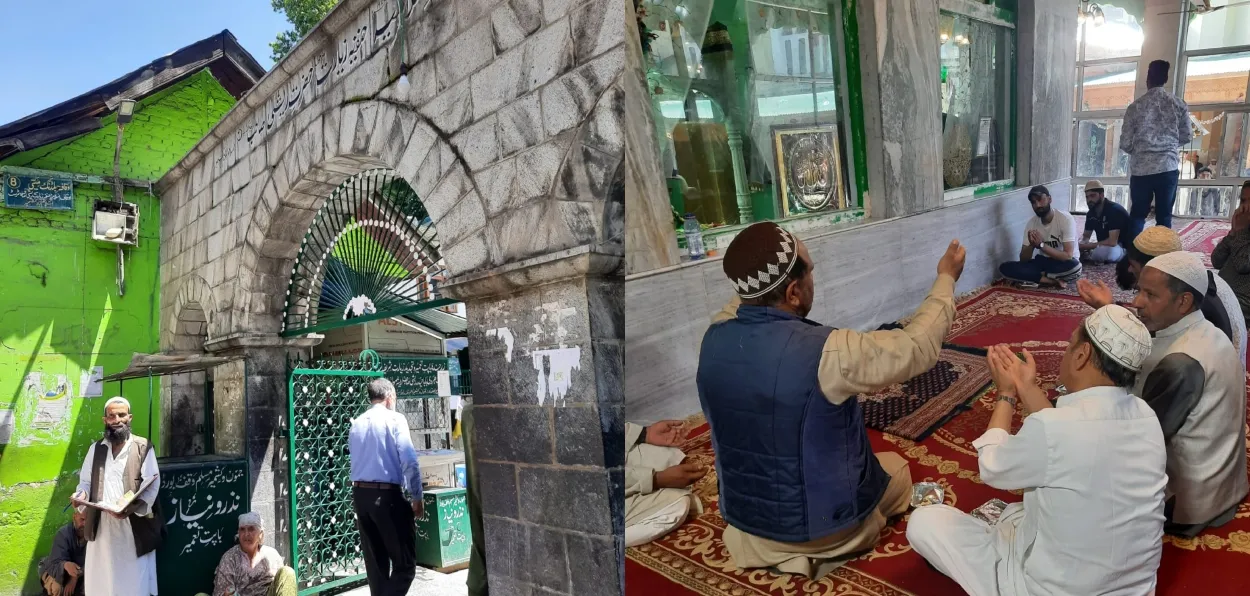
Ehsan Fazili/Srinagar
By and large, the entire population of South Kashmir abstained from eating mutton, chicken, and fish for five days from May 7. These days are “virtuous days” (Ayaam-e-Parhezgari) and coincide with the Urs of Sufi saint, Baba Hyder Ali Reshi, popularly known as Reshi Moul (The father Reshi). The 459th Urs was observed with night-long special prayers at the shrine of Reshi Moul located in the heart of the Anantnag town.
The Urs is observed on the first of Zul Qa’dah, the 11th month of the Islamic (Hijri) calendar, with strict abstention from non-vegetarian food is observed from the 27th of (the previous month) Shawwal, the 10th month of the Islamic calendar.
The 16th-century Sufi from the Reshi sect of mystics is believed to have been born in 909 Hijri, and passed away in 986 (Hijri), while according to the Gregorian calendar, he was born on January 17, 1504, and passed away at the age of 68 years.
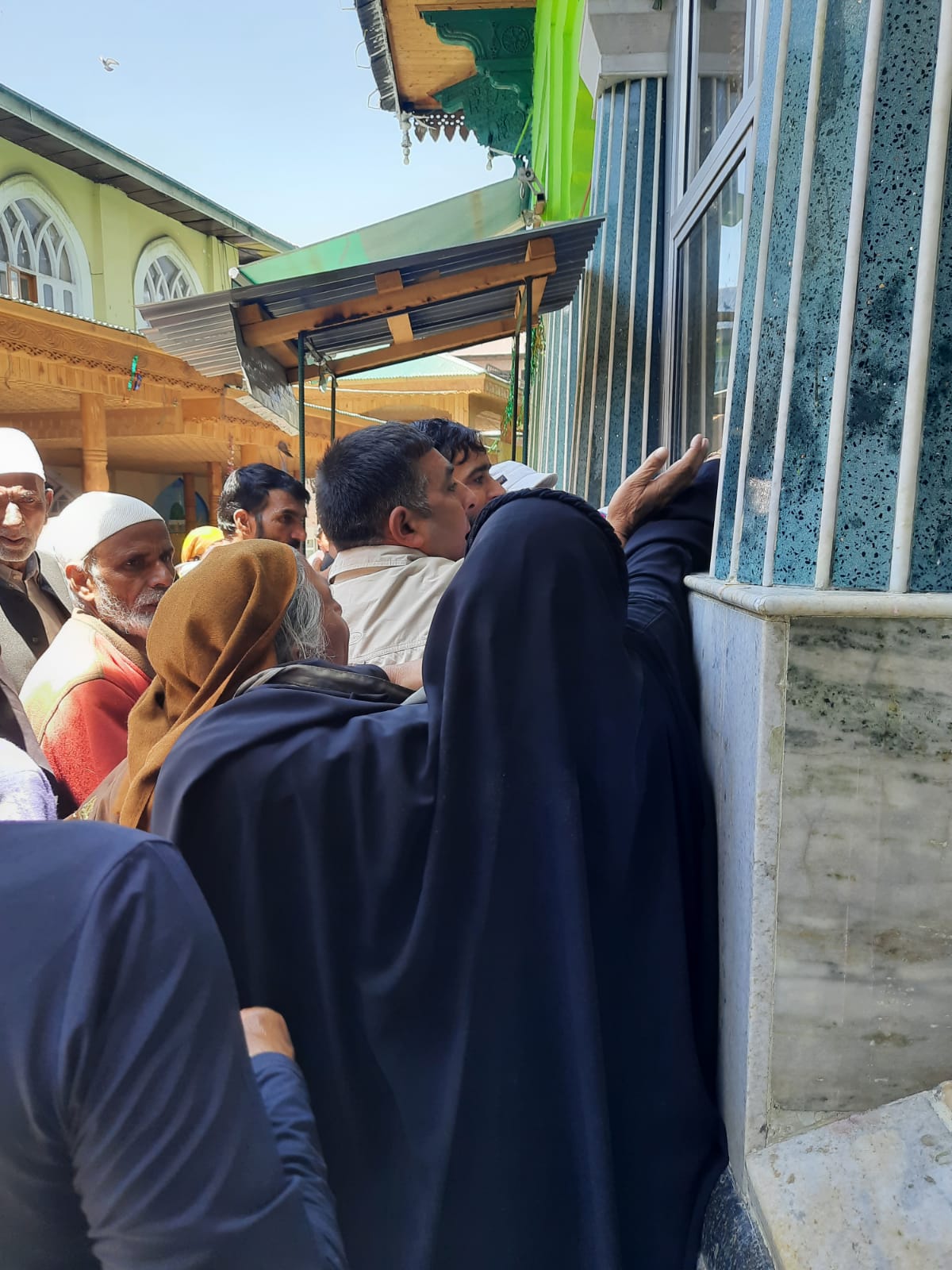 Women devotees seeking consacrated yellow rice as Reshi Moul's blessings
Women devotees seeking consacrated yellow rice as Reshi Moul's blessings
“For five days the people of South Kashmir refrain from eating mutton, chicken, and fish in honour of the revered saint, Reshi Moul'', Naseem-ul-Gani, Khateeb at the shrine, told Awaz-The Voice. This practice has been followed for centuries as the saint had tasted non-vegetarian food only once during his lifetime.
The maiden deviation from his practice had been done to “satisfy” his spiritual guide, Sheikh Hamza Makhdoom, popularly known as Makhdoom Sahib and Sultan-ul-Arifeen, Sufi saint of the highest order, whose shrine is located at Kohi Maraan below Hari Parbat Fort in Srinagar.
For the past many centuries the people of South Kashmir, particularly Anantnag district and the town, “the people have been adhering to the practice as a mark of respect to the saint”, said Naseem-ul-Gani. The Urs in its true spirit is also “observed by the followers living in other areas and in other countries as well”, he said.
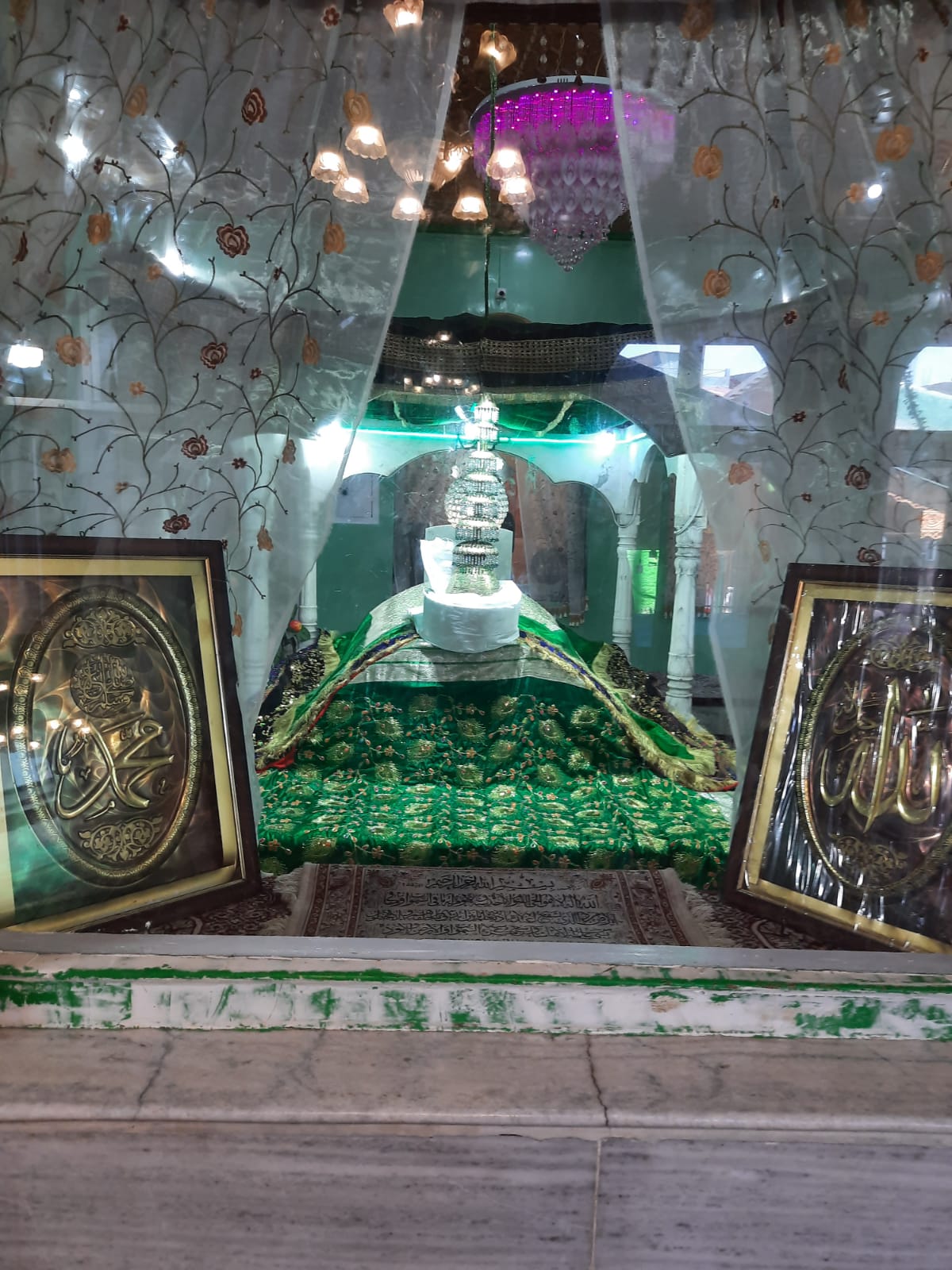 The grave of Rishi Moul inside the shrine
The grave of Rishi Moul inside the shrine
He said that people from other countries like Japan, Spain, and Germany have also been visiting the shrine. The devotees in large numbers continue to throng the shrine to get the blessings of the saint and present their offerings to seek his blessings.
The shrine is an example of ethnic Kashmiri architecture and a place of pilgrimage for Kashmiris of all communities. The complex has a spring of Sulphur water and an expansive mosque for prayers.
Hundreds of people from different areas converge at the area every day, while the numbers are higher on Thursdays on the eve of Fridays, like “many other Sufi shrines in Kashmir”. Thursdays attract larger numbers, particularly at Chrar-e-Sharief, the abode of the shrine of Sheikh Nooruddin, the founder of the Sufi order in Kashmir.
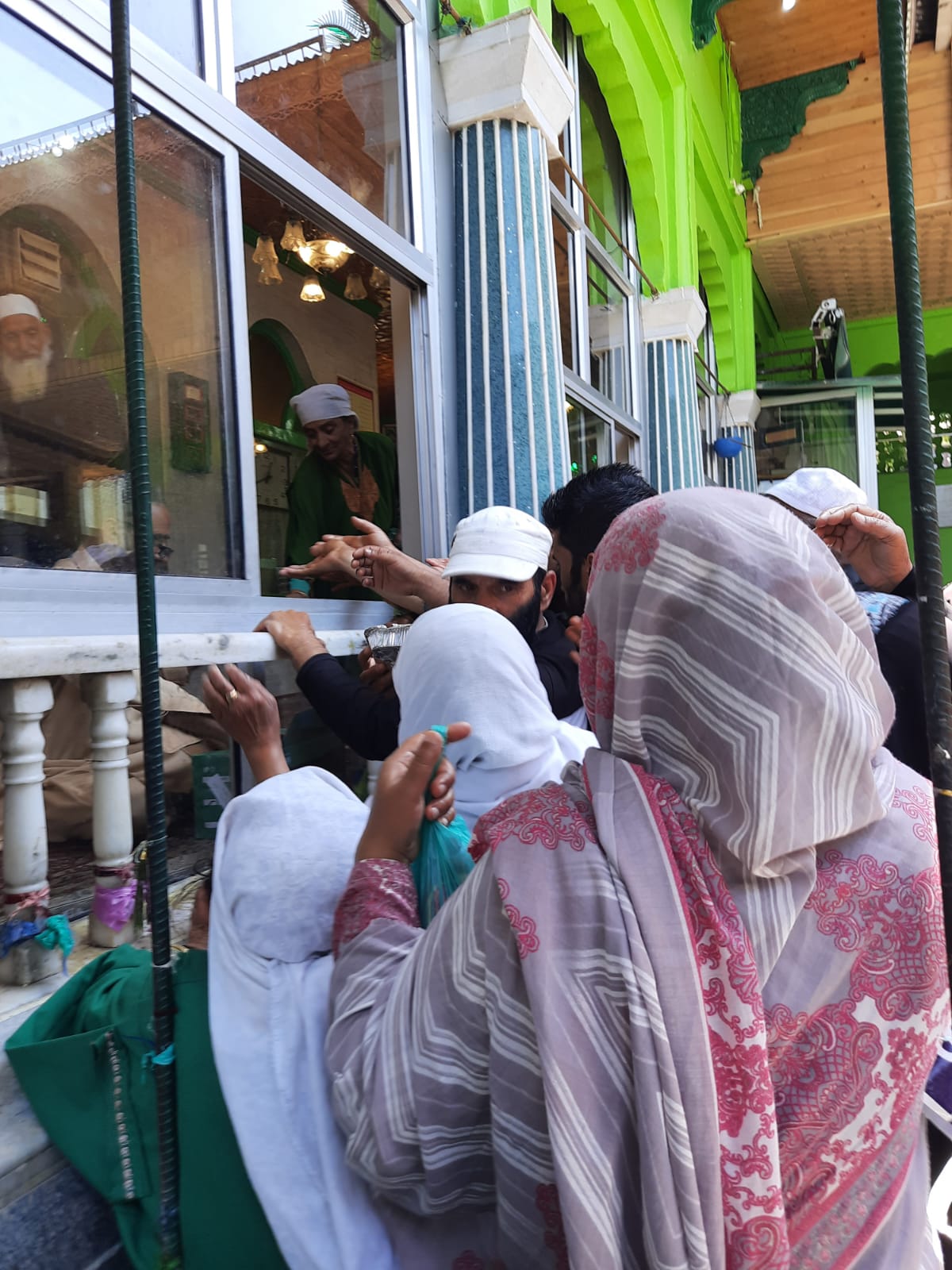 Women devotees at the shrine of Reshi Moul
Women devotees at the shrine of Reshi Moul
The shrine has the graves of Reshi Moul (at the center) and his 20 disciples. It is around these graves in the mausoleum that the pilgrims, men, and women, seek the blessings of the saint. The graves of nine others are also buried at unidentified places inside the compound.
People from the areas, particularly in Anantnag town, turn strict vegetarians for five days of the Urs. All the mutton and chicken dealers have their shops shut for five days. Only eggs and milk products like cheese are being consumed in place of the mutton dishes.
Vegetarianism in an otherwise Mutton-loving Kashmir also impacts the scheduling of marriage functions, engagements, wedlock events, family gatherings, etc.
Almost every household in the town, according to many residents, strictly adheres to the practice by observing “virtuous days” of restraint from taking mutton-chicken-fish preparations in honour of the 16th-century saint.
Each household has its tales associated with observance of the “Reshi Moul Saeben douh” (the days of Reshi Moul). One such instance is that of an elderly woman, a grandmother, heading a family of six including her son, daughter-in-law, both government teachers, and their three school children while living three decades ago.
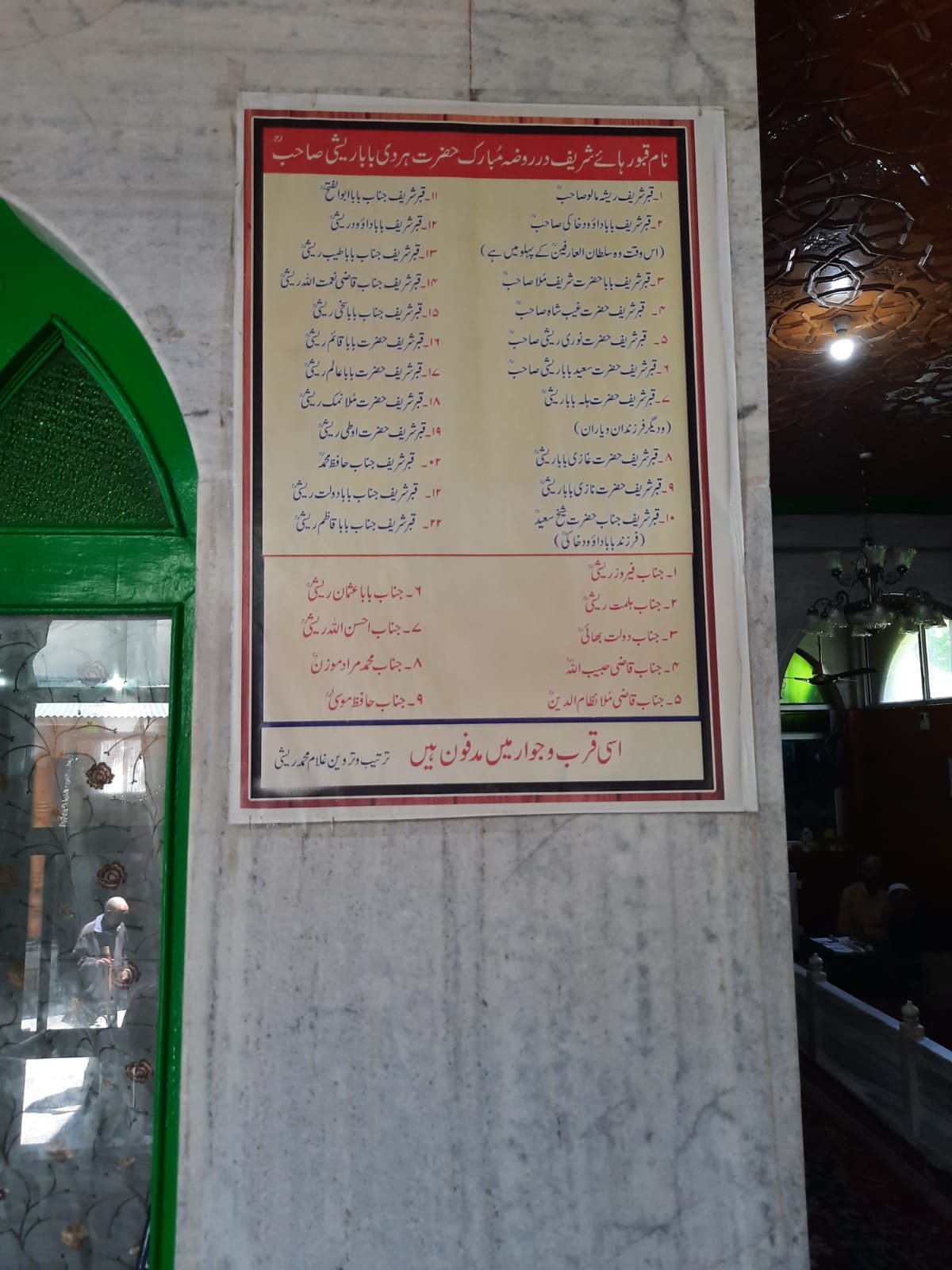 The list of grave of Reshi Moul's disciples
The list of grave of Reshi Moul's disciplesMerajuddin, a nneighbour recalled how “Chechamma” (Aunty) who lived about 300 yards away from the Reshi Moul shrine, “washed all utensils and mud-plaster the kitchen to clear it off any flesh marks or smell before the Urs”,
She would also wash all the clothes and smear a fresh plaster of mud on her Chula and its surroundings in the old mud-house and also clean up her two-story house, “as a mark of respect to the saint”, he adds.
The tomb of Baba Hyder Reshi popularly known as Harda Reshi or Reshi Molu, is visited by both Muslims and Hindus from all over the valley.
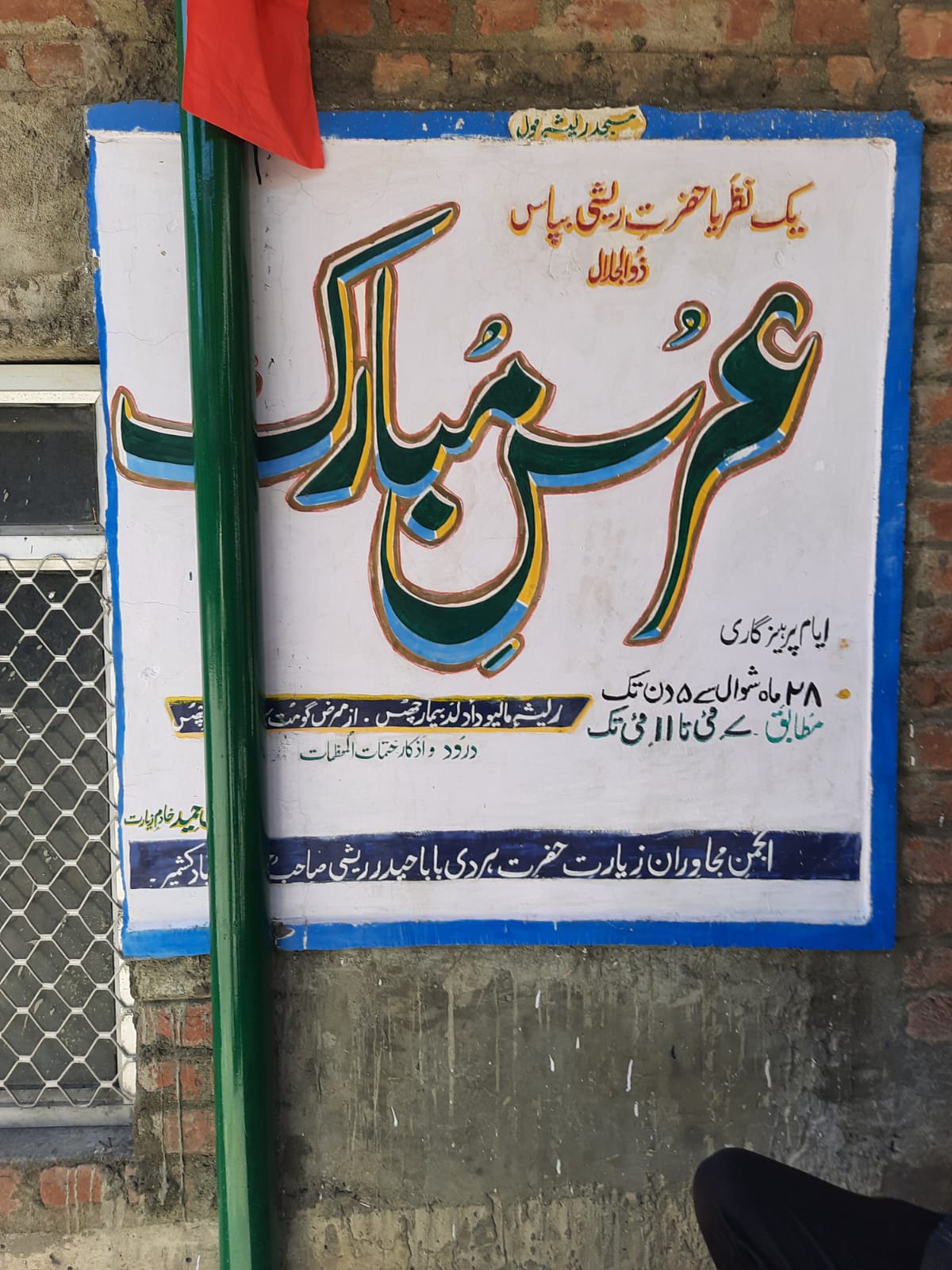 Public notice for Urs of Reshi Moul
Public notice for Urs of Reshi Moul
Reshi Moul was born in the village Dandar of Anantnag in the house of Sheikh Abdulla, a blacksmith by profession. As a child, he performed great miracles, looked after cultivation, tended cattle, and spent his life in celibacy.
Hazrat Sheikh Hamza Makhdoom, a great saint of Kashmir whose shrine is situated on the hill of Hari Parbat located in Srinagar city, was his spiritual guide.
ALSO READ: Qaiser Nizami, the only Kashmir musician to win a Grammy nomination
He became famous after the then-ruler of Kashmir Ali Shah Chak and Prince Yousuf Shah Chak started paying courtesy calls to him. The one-time great scholar and chief Qazi of Kashmir Baba Dawood Khaki also visited him. Reshi Moul possessed great spiritual powers and abstained from eating meat and onions.
